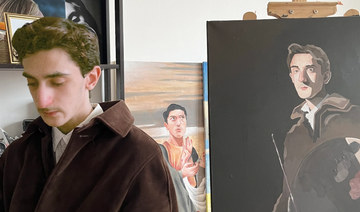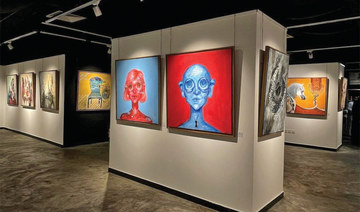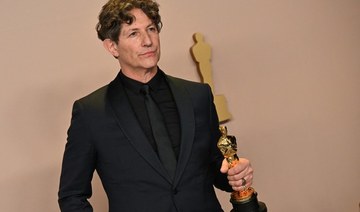Dareen Jaamour is a Syrian interior designer who was born and raised in Jeddah. She is now the creative mind behind Jou-L Handmade Art with Love.
Jaamour has always been interested in art since she was young. This was further nurtured with a degree in interior design from Genius Academy Institute. She initially trained with architects, which helped to shape her career.
“I have worked with different interior design companies and have gained exposure to real life experiences, dealing with contractors and suppliers. My last job before going independent was with the famous Italian brand Visionnare, an IPE Cavalli furniture line where I was a senior manager responsible for the design studio and was privileged to design their showroom in Jeddah,” she said. “I’m passionate about the environment and I believe that the up-cycling and re-use of materials is the way forward. By turning them into something functional and visually stunning, I am creating something utterly unique,” she said.
Two years back the interior designer created her own brand Jou-L that adopts the idea of up-cycling. She spoke to Arab News about her project, interior design and future plans.
What is the meaning and the story behind the name of your brand?
The name Jou-L was inspired by my daughters Joud and Lamar who are truly my little jewels. They were the reason that I started my own business, so I can spend more quality time with my sweethearts and have them around.
Tell us about your brand.
Jou-L is a reflection of my personality, passion, creativity and love for art. Having an interior design background helps me come up with stylish and unique designs. Jou-L offers up-cycled, one-of-a-kind furniture and home accessories. Each piece is unique, ready to live a new story and make memorable memories with you. By owning a Jou-L up-cycled product you are helping the environment because all products are refurbished, old or unused furniture is brought back to life once again in a new gown. Also, five percent of the selling price will be donated to different charitable organizations.
What got you interested in designing furniture?
As an interior designer, furniture is part of my daily work and finding the right piece for each project has always been a challenge. I wanted to bring art into furniture and come up with something unique and personalized. I was motivated by two points:
1. I was searching deep inside me to find a job that keeps me around my kids and at the same time something that I love to do.
2. Seeing all the pieces thrown away because of a ripped cushion, a broken leg or a scratched table top just broke my heart, but at the same time it inspired the artist in me.
What inspires you when working on a new line?
I don’t follow a specific style or line, my work is inspired mainly by life and those around me. Each piece I work on is different. I work with different materials in my designs, playing with the relationship between the various elements.
What are the obstacles you faced in the Kingdom when establishing your brand?
I have just started this new business and I am still trying to establish my brand in Saudi Arabia as a range of exquisite artistic handmade furniture and accessories catering to those who appreciate art and the extra attention to detail that I put into each piece. One of the obstacles I have been facing is the lack of skilled craftsmen and the availability of raw materials used in my work.
You are Syrian, but your brand is in Saudi Arabia. Why did you choose to establish your brand in the Kingdom?
I was born, raised and I live with my family in the Kingdom. In addition to that, the Saudi market is very strong and the Saudi consumer appreciates art and originality.
What makes your work special?
My work is a reflection of my love for art and each piece I work on is different in terms of style, material used and finishes, etc. I don’t repeat myself and everything is handmade.
I am an artist and a designer at the same time which allows me to project this into my work. I get to wear both hats frequently. I do not separate the design and production process, they often happen together and at the same time. In addition I understand the close relationship between the design, materials, and production, which makes my work special.
How would you describe your personal interior design style?
In my designs I don’t focus on anything in particular and it is whatever I get my hands on. My style is simple, functional, traditional, rustic, eclectic, cottage, boho, vintage or authentic. Whatever serves the design concept.
Are you environmentally friendly? Do you recycle, reduce and reuse?
I believe in recycling and my work revolves around that concept. I’m actually up-cycling old, unused and abandoned pieces
Have you ever combined Syrian and Saudi interior together?
I merge different cultures and techniques in my work. My designs have no one single identity and in most cases combine different identities.
Do you design custom-made furniture?
I always get requests to design custom-made furniture. Clients like to have something special that fits their individual needs and tastes.
Do you design and work on furniture from scratch?
Yes. I have always had this passion to design from scratch and I have employed this in many of my projects, especially when I don’t find in the market what I have visualized. For big projects we often design custom-made furniture and this is when my creativity flows.
Do you have your own studio and staff to work with on every project? Or do you face a hard time looking for workers?
I have been in business for many years which allowed me to have access to skilled reliable labor — people who understand the way I work and deliver what I need from them. I have my own studio but the nature of my business does not require full time employees to do the job. However, sometimes I really like to try new workers and give them a chance to do the job. I believe that new blood always adds something to my designs.
In home design, what is the most common thing people want remodeled?
Areas such as the main salon, main dining room, guest restroom, master bedrooms, kids’ rooms, etc.
What are the materials and fabrics you like to work with usually?
My main material is wood — it’s my signature material — but I also like to work with rusted metal, leather, clear glass, vintage fabrics and hand-printed fabrics to give the space an authentic personalized style.
What is your signature style in furniture designs?
Everything that comes out of my kitchen workshop is entirely handmade.
My signature is handmade printing on wood and fabric plus the decoupage technique to create a unique vintage look.
What factors do you consider when meeting with clients?
I have a checklist that I usually follow:
1. Timing, if the client has set a deadline or not.
2. Working space, if it’s occupied or not.
3. Budget, it’s most important to stay within the budget because clients are not happy if they are required to pay more than they have allocated.
What is your dream project?
My home sweet home, starting from scratch. And one element I would like to include in each of my projects is a green house, an atrium or an indoor garden.
What are your goals/dreams for the future?
As a mother If I could wish for one thing in my life, it would be that my children grow up happy.
As a person I see a variety of positive changes across the full spectrum of my life, I’m seeking to make myself healthier, wealthier and wiser.
What advice would you offer someone considering this career?
If you are considering being an interior designer and have the talent, you need to sculpt that raw talent. First, you need to study hard and obtain computer skills such as CAD, 3D and Photoshop, as well as some financial management skills. Never establish your own company without having a real life experience. Once you start working get yourself to the site and ask as many questions as you can. Getting all the answers straight away from engineers and contractors helps you to build and refine your experience. Finally, I welcome you to become a creative part of the world where limits do not exist. Live your dream!
—
Email: [email protected]
Dareen Jaamour’s dream: A green house in every house
Dareen Jaamour’s dream: A green house in every house

Heba Ismail brings Saudi representation to NFT ecosystem
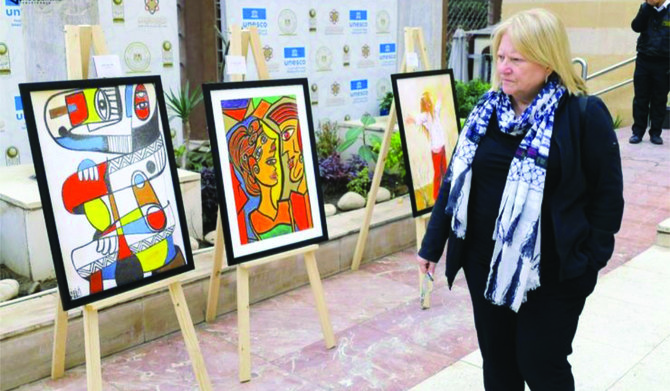
- Heba Ismail is highlighting ways for artists to flourish in the digital world
JEDDAH: Saudi artist Heba Ismail showcased her work at the Outer Edge Innovation Summit in Riyadh this week.
Commenting on her experience at the summit as one of the first Saudi artists to venture into the Web3 art scene, she said: “Having my paintings displayed on the event screens is a tremendous honor, offering global visibility and inspiring more Saudi and Arab artists to explore the diverse options available for sharing their art with the world.
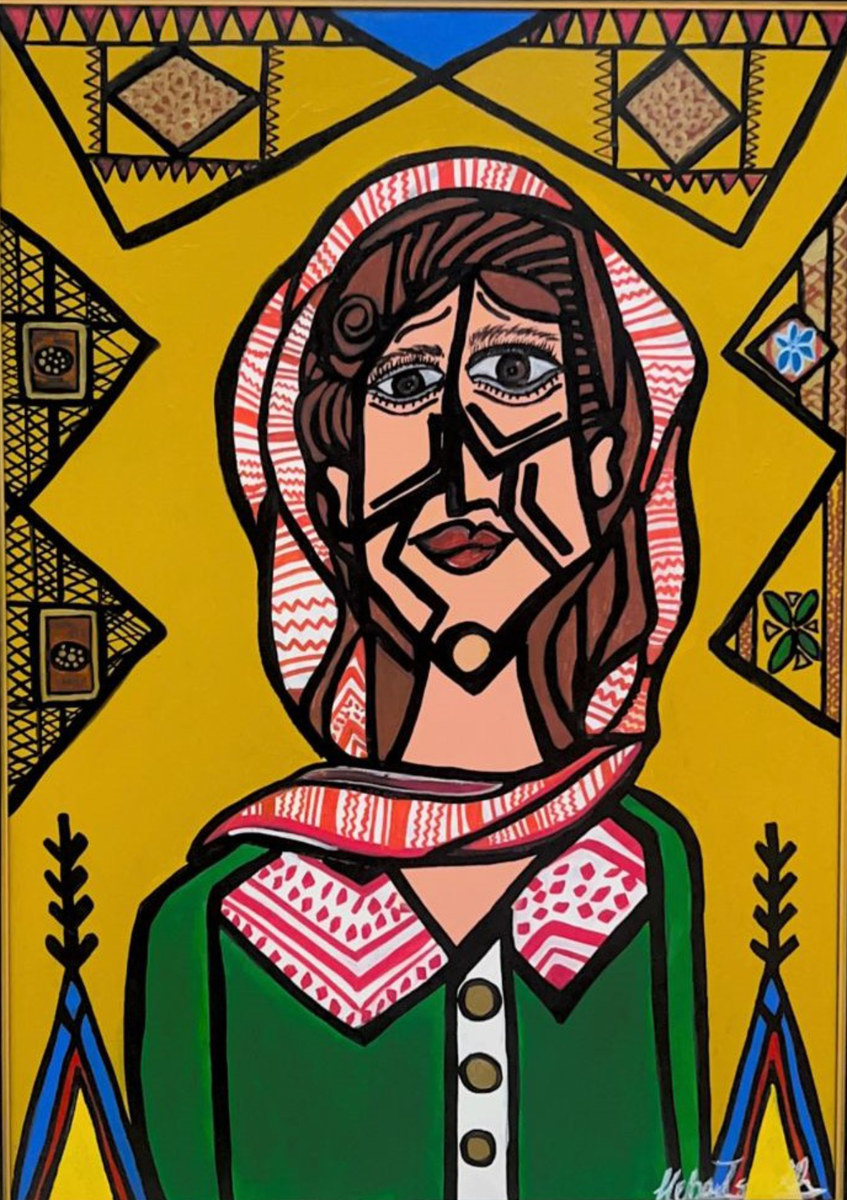
“Through my participation with Nuqtah, the first Saudi NFT platform, I am eager to present my art on a global stage and connect with audiences in innovative ways,” she continued.
Non-fungible tokens — or NFTs — are, in this scenario, digital tokens that can be redeemed for a digital art work. Ismail is exploring their potential in the Saudi art scene.
HIGHLIGHTS
• With a professional background in dentistry, Heba Ismail found parallels between that meticulous work and her own creative process.
• Partnering with ChainVisory, a blockchain consultancy company, Ismail launched the Hebaism brand.
• It combines NFTs and original paintings, providing collectors with both digital and physical assets.
For Ismail, art has always been more than just a hobby — it’s been a lifelong calling. With a professional background in dentistry, Ismail found parallels between that meticulous work and her own creative process.
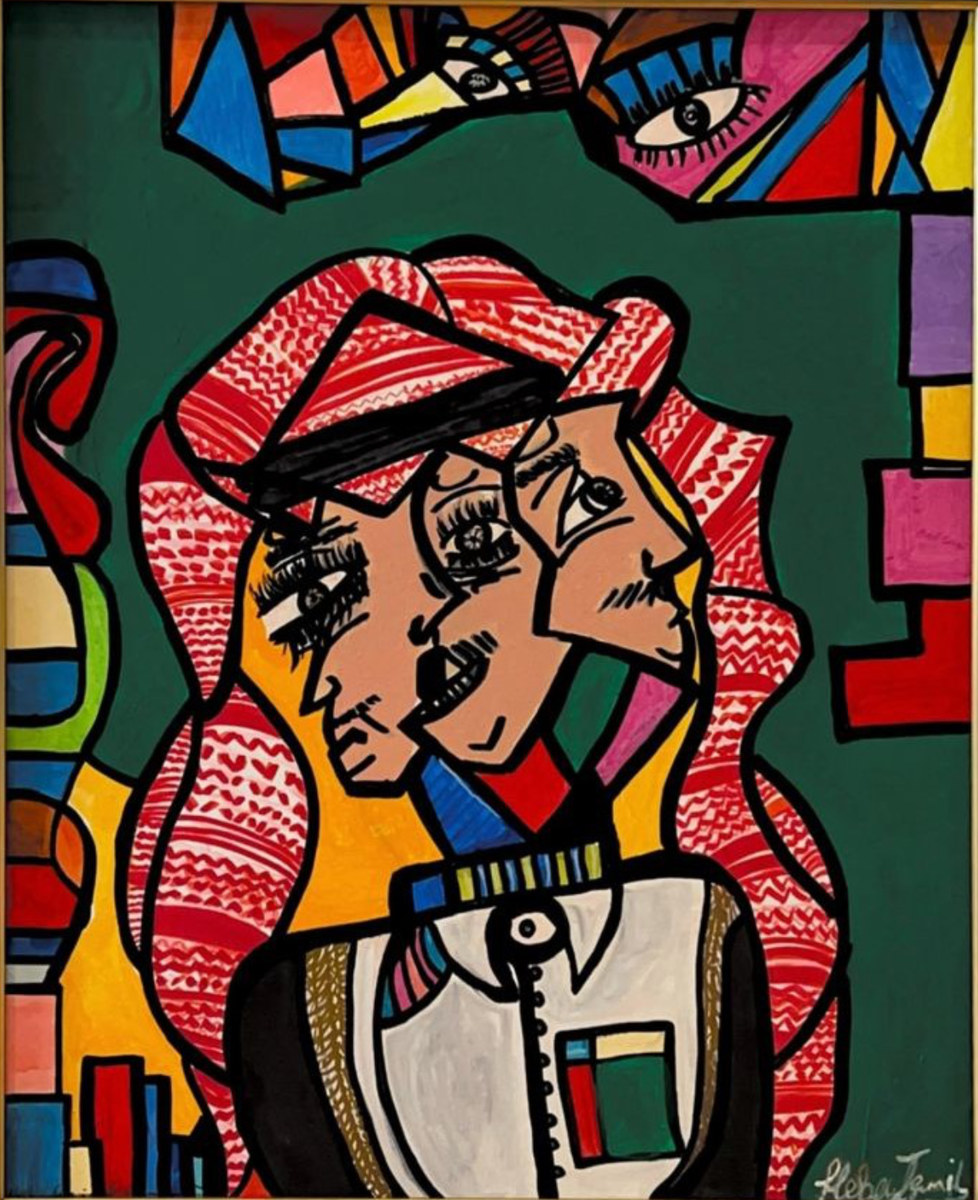
Inspired by movements including cubism, fauvism, and surrealism, Ismail’s art is a fusion of diverse influences and personal narratives “Each face represents a feeling and a vision documented on a painting. I paint poetry, and often times each piece is accompanied by a poem,” she said. “As a Saudi female, most of my paintings represent myself and my Saudi culture, which I am proud of. The characters are coded feelings, faces that tell a story — either joy, sadness, or acrimony.”

Her introduction to NFTs came in 2021, sparking a fascination with the technology and its potential. Partnering with ChainVisory, a blockchain consultancy company, Ismail launched her Hebaism brand, which combines NFTs and original paintings, providing collectors with both digital and physical assets.
As a female Saudi artist, I want to leave a mark and impact on every art platform, putting Saudi art on the map worldwide.
Heba Ismail, Saudi artist
“I wanted to keep the authentic classical painting process, yet the NFT world gave me a chance to meet and discover different ways to share my art and build a name and a brand,” she said. “It’s been an enlightening journey, uncovering the futuristic art process and connecting with a vibrant community through Web3.”
Ismail hopes to inspire other artists in the region to explore new avenues for artistic expression.
“As a female Saudi artist, I want to leave a mark and impact on every art platform, putting Saudi art on the map worldwide,” she said.
‘Bridgerton’ actress says she was warned not to campaign for Palestinians
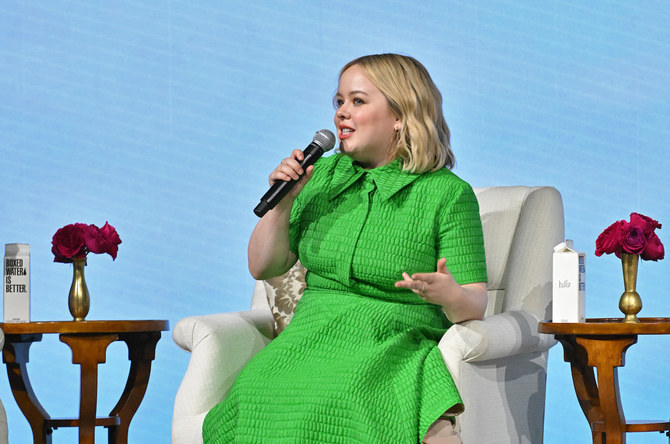
- Nicola Coughlan: Hollywood insiders told her advocacy could harm her career
- Irish star feels ‘moral responsibility’ to campaign for ceasefire, continue to fundraise
LONDON: Irish actress Nicola Coughlan has revealed that she was told her Palestinian advocacy could harm her career.
The “Bridgerton” and “Derry Girls” star told Teen Vogue she had been warned by people in Hollywood not to be openly supportive of Palestinian rights, but has continued to campaign for a ceasefire in Gaza and still publicly wears an Artists4Ceasefire pin.
“You do get told, ‘you won’t get work, you won’t do this,’ but I also think, deep down, if you know that you’re coming from a place of ‘I don’t want any innocent people to suffer,’ then I’m not worried about people’s reactions,” she said.
“My family lived in Jerusalem back in the late ‘70s, early ’80s, before I was born, so I heard first hand stories about them living there.”
She said her father, who served in the Irish military, went to a “lot of war-torn regions after the conflict and try and help rebuild,” and this had left a profound impression on her.
“I’m so lucky I’ve gotten to this point in my career, and I’m privileged as a white woman, first off.
“Then the fact that I get to do the job I love and travel the world and meet amazing people, I feel a moral responsibility to give back.”
She has made a point of continuing to campaign and raise money around the issue, adding: “To me, it always becomes about supporting all innocent people, which sounds oversimplified, but I think you’ve got to look at situations and just think, ‘Are we supporting innocent people no matter where they’re from, who they are?’ That’s my drive.”
Coughlan said social media plays a role in driving advocacy but it requires nuance. “More of us should be trying to understand how upsetting and traumatising this is for Jewish people, and how horrific it is that all these innocent people in Palestine are being murdered,” she added.
A number of Hollywood figures have faced repercussions for their open support of the Palestinians or criticism of Israel.
Mexican actress Melissa Barrera was fired from the latest “Scream” film over social media posts in support of Palestine, while director Jonathan Glazer caused controversy for using his acceptance speech at the Oscars for his film “The Zone of Interest” to criticize the Gaza war.
Saudi Film ‘Hajjan’ wins 6 nominations at Critics Awards for Arab Films
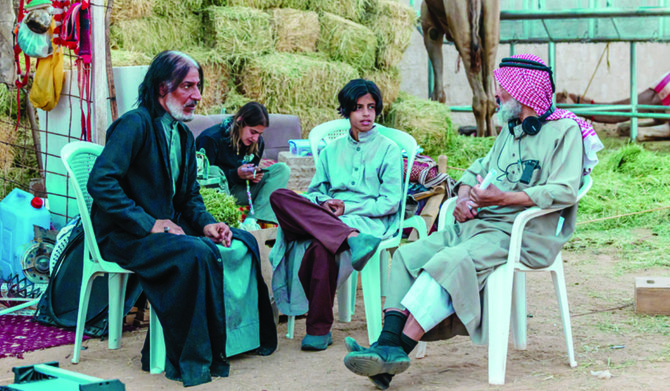
DUBAI: Saudi Arabia-based film “Hajjan,” directed by Egyptian filmmaker Abu Bakr Shawky, is nominated for six categories at the eighth Critics Awards for Arab Films.
The movie is competing in the best feature film, best screenplay, best actor, best music, best cinematography and best editing categories.
“Hajjan” tells the story of Matar, a boy who embarks on a journey across the desert with his camel, Hofira.
The movie is a co-production between the Kingdom’s King Abdulaziz Center for World Culture, or Ithra, and Egyptian producer Mohamed Hefzy’s Film Clinic.
The movie, which is written by Omar Shama from Egypt and the Kingdom’s Mufarrij Almajfel, stars Saudi actors Abdulmohsen Al-Nemer, Ibrahim Al-Hsawi, among others.
The awards ceremony, scheduled for May 18 on the sidelines of the Cannes Film Festival, is organized by the Arab Cinema Center in Cairo and assessed by a panel of 209 critics representing 72 countries.
Sudanese director Mohamed Kordofani’s inaugural feature film, “Goodbye Julia,” and Tunisian filmmaker Kaouther Ben Hania’s Oscar-nominated documentary, “Four Daughters,” scored nominations in seven categories.
Jordanian filmmaker Amjad Al-Rasheed’s “Inshallah A Boy” and Palestinian-British director Farah Nabulsi’s “The Teacher” have six nominations.
REVIEW: Sofia Boutella’s heroic efforts can’t save ‘Rebel Moon — Part Two’
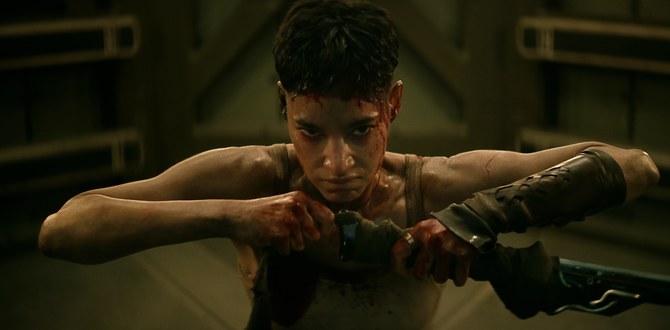
DUBAI: “Rebel Moon — Part One: A Child of Fire” drew scathing reviews (our writer described it as perhaps “the most discombobulating collection of mismatched sci-fi tropes ever committed to film”). “Part Two: The Scargiver” simply adds to that legacy.
The story: Former Imperium soldier Kora and the surviving band of ragtag warriors she’s recruited return to the moon of Veldt — home to simple farming folk in danger of being blown to bits by the mighty Imperium for failing to supply the unreasonable grain quota demanded of them. With just a few days before the deadline, Kora and her band must train the villagers to fight (and harvest the grain in just three days to provide a bargaining chip). What Kora doesn’t know is that Admiral Noble, the bad guy she ‘killed,’ is still alive. And bent on vengeance.
Before the enemy arrives, the warriors tell their life stories in a trust-building exercise — one of the clunkiest pieces of exposition ever written. There are slow-mo shots of the harvest gathering and a brief interlude to show that Kora and farmer Gunnar are very much in love.
Then, thankfully, we’re into the battle(s). Here, at least, director Zack Snyder doesn’t disappoint, even giving an original twist to the ‘spaceship plummeting from the sky’ trope by staging a showdown between Kora, Gunnar and Admiral Noble on a floor that becomes increasingly vertical. Below them, the villagers fight heroically against odds very much stacked against them, even with the help of Nemesis and her two flaming definitely-not-lightsabers.
The well-constructed battle scenes, though, aren’t enough. Not even with a cast fighting as heroically as the villagers to salvage something. Sofia Boutella, as Kora, emerges with most credit, proving herself a convincing action hero who deserves better than this material to work with (spoiler alert: perhaps even material that allows the heroine to kill the bad guy herself, without the intervention of her boyfriend).
Yes, no one’s sitting down to watch an “epic space opera” in the expectation of thought-provoking dialogue, but “Rebel Moon” is like the result of forcing a seven-year-old to watch all things “Star Wars” and “Star Trek” in random order, then asking them to write down what happened. The best thing to say about “The Scargiver” is that it finishes — but even that comfort is tainted by Snyder’s cynical setting up of a potential part three. Possibly because that seven-year-old fell asleep before writing an actual ending.
Saudi Arabian history on display at Abu Dhabi Book Fair
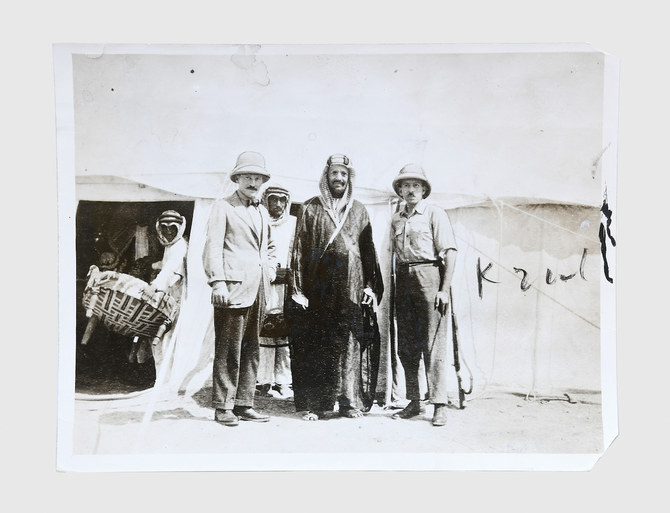
- Selections from London-based rare-book dealer Peter Harrington’s offering at the UAE fair
‘Ibn Saud press photograph’

According to notes from rare books specialists from Peter Harrington’s team, this image from archives of The Times newspaper was taken in what was then called Hejaz, following a “critical and secretive meeting between (founder of Saudi Arabia) Ibn Saud (center) and the British representative Sir Gilbert Clayton (left) — one of a pivotal series of negotiations which led to the Treaty of Jeddah in May 1927.” The two discussed “various outstanding questions affecting the relations of the Kingdom of the Hejaz and Nejd with the neighboring states of Iraq and Transjordan” to help determine the northern borders of Saudi Arabia. “Discussions over the borders were protracted and complex, with the towns of Maʿan and Kaf the object of particularly intense debate,” the notes state.
‘Pilgrimage to El-Medinah and Mecca’ by Richard F. Burton
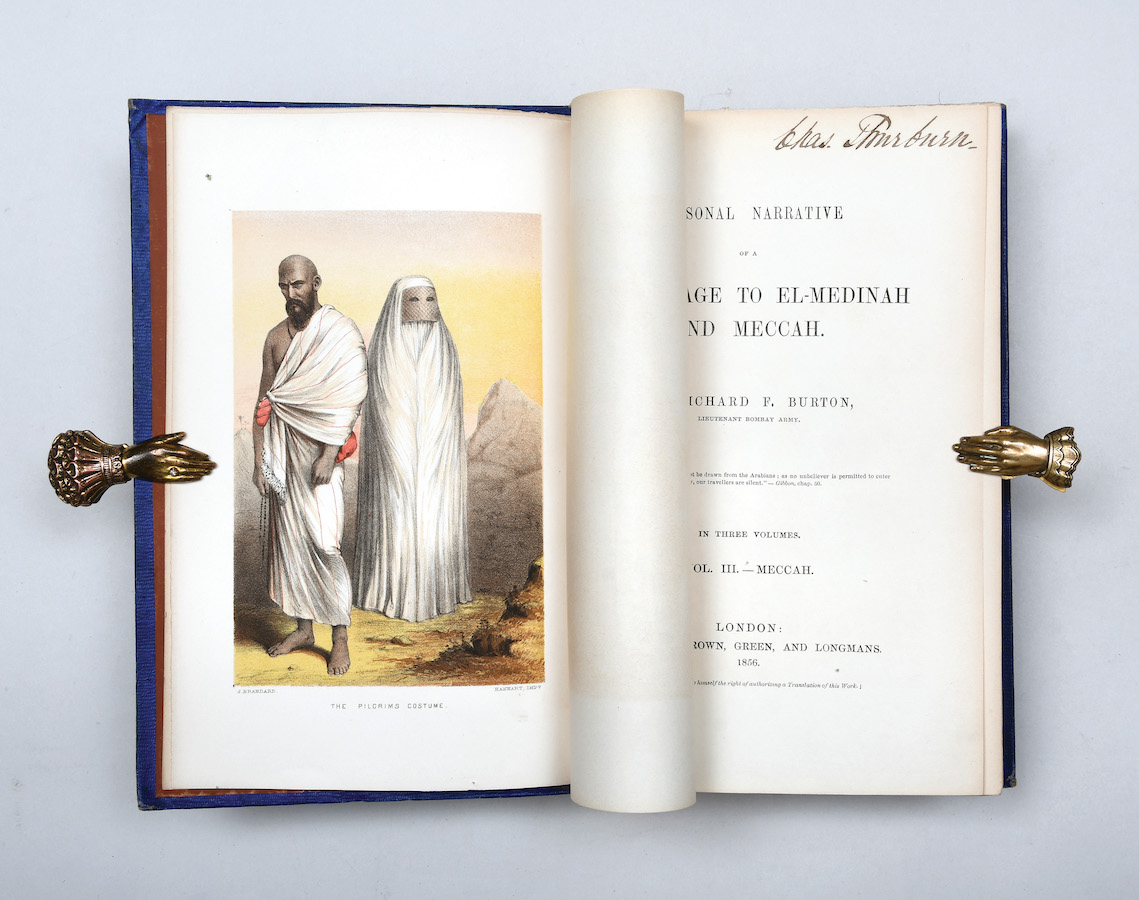
In this three-volume first edition, complete with illustrations, of “one of the most extraordinary travel narratives of the 19th century,” the British explorer, writer and polyglot Richard Francis Burton recounts his Hajj journey, made “in complete disguise as a Muslim native of the Middle East” at a time when fewer than half-a-dozen Europeans had made the pilgrimage — forbidden to non-Muslims. “It surpassed all preceding Western accounts of the holy cities of Islam, made Burton famous, and became a classic of travel literature, described by T. E. Lawrence as ‘a most remarkable work of the highest value,’” the team from Peter Harrington note. In Makkah, Burton performed all the rites of the pilgrimage and his subterfuge remained undiscovered.
‘Map and Overview Presenting the Hejaz Railway Route’

This map from 1903 depicts the route of the ambitious Hejaz Railway project. It “depicts a very broad area, extending from just north of Hama, Syria, all the way south a little way past Makkah, in the Hejaz; it covers most of Syria, all of Palestine, the Sinai Peninsula, the Suez Canal, and all the north-western Arabian Peninsula,” Peter Harrington’s rare book experts write. “It clearly delineates those parts of the railway that are in place and those under construction … with each station labelled. Additionally, it depicts the two alternative routes proposed for extending the line to Makkah, employing broken lines, while another line traces the proposed (but unrealized) route of a rail line from Makkah to Jeddah. The map also labels important roads and caravan routes.”
Four years after this map was published, the book seller’s notes state, the railway reached AlUla, which is not marked on this map, although Mada’in Salah (now Hegra) is, which today is the site of one of two museums dedicated to the Hejaz Railway.
By 1908, the railway had reached Madinah, where, the notes state, “for various political reasons, it had to be terminated.” Nevertheless, they continue, “until the outbreak of the First World War, it allowed hundreds of thousands of pilgrims to make the Hajj in safety and with relative ease.”
‘Material from the library of Peter O’Toole by T.E. Lawrence’
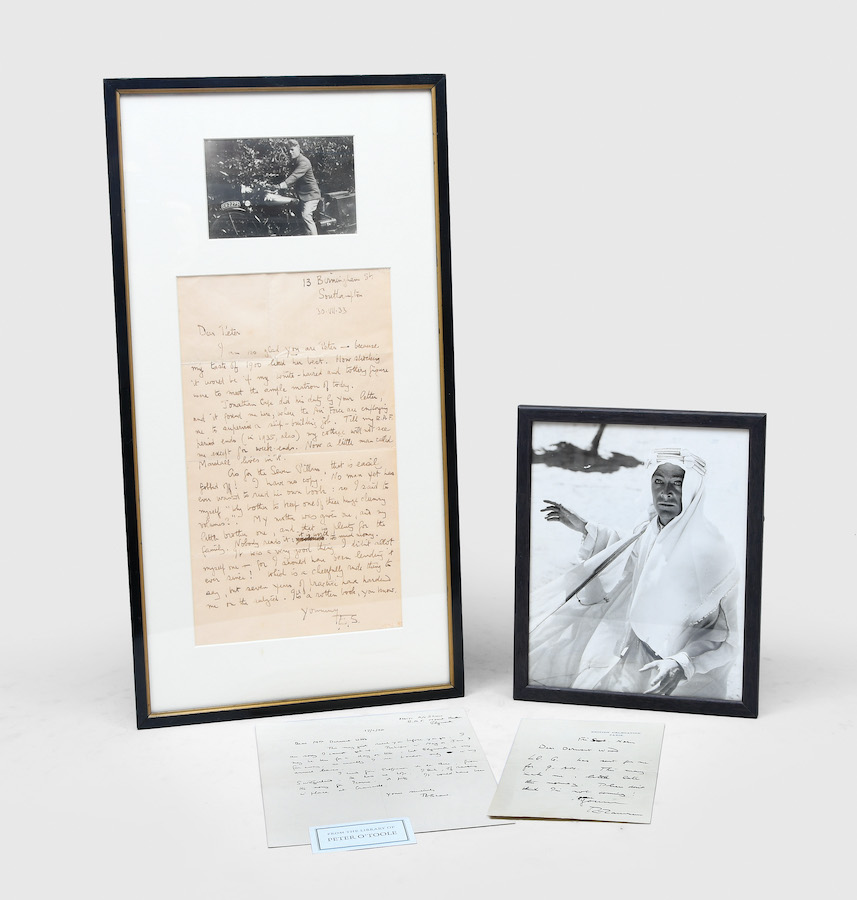
Billed by Peter Harrington as an “insightful archive, spanning Lawrence’s transformation from man of the moment to unwilling celebrity, from the library of Peter O’Toole, whose breakthrough portrayal in David Lean’s 1962 biopic still shapes perceptions of the famous Arabist. Autograph material from Lawrence is always highly prized, but rarely is its provenance so apposite.”
The centerpiece of the material is a photograph and an unpublished letter written by Lawrence (who became known as Lawrence of Arabia following his journeys across the Middle East, including modern-day Saudi Arabia), framed as a piece and gifted to the English actor who played Lawrence in the aforementioned biopic by his wife, Sian, and a friend not long before the premiere of the movie. The letter makes clear Lawrence’s difficult relationship with his celebrity, and is cutting about his own book, “The Seven Pillars of Wisdom,” saying that he did not own a copy himself (“No man yet has ever wanted to read his own book”) but that his mother and “little brother” did, “and that is plenty for the family. Nobody reads it: it is worth too much money. ... It is a rotten book, you know.”
‘Oil Region in the Desert of Saudi Arabia’
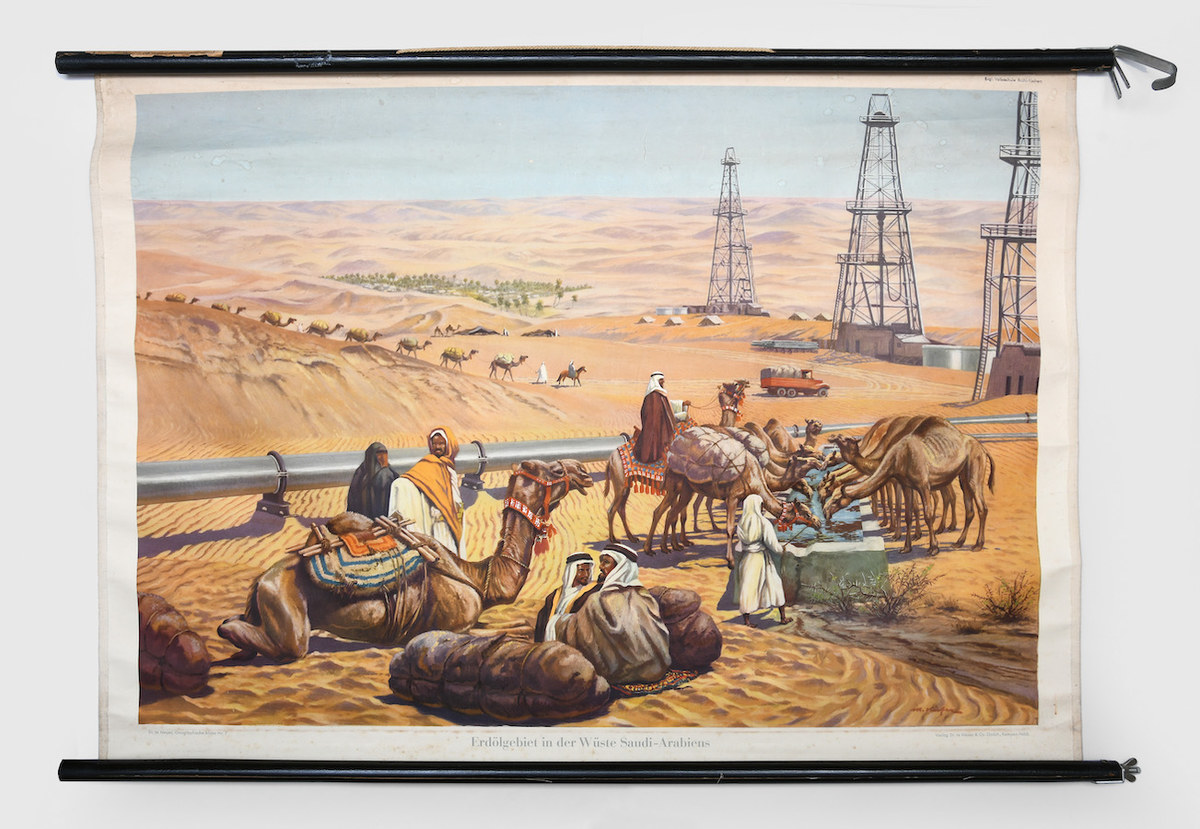
This 1950 image, “after a painting by the German artist Michael Mathias Kiefer,” is one of a series of geographical pictures intended for use in the curriculum of German schools. “The painting juxtaposes Arab figures in traditional garb with images of drilling rigs, a lorry, and oil storage tanks, creating a strikingly orientalist image,” Peter Harrington’s notes state. “In the middle of the composition, a pipeline bisects the image, a forceful reminder of the centrality of oil to the modern Saudi Arabian economy. In the foreground, members of a group of travelers, possibly intended to be Bedouins, rest on a carpet and let their camels drink from a water tank. Away in the background, before a distant oasis, more travelers arrive at a campsite, their camels heavily laden. Their destination is the oil infrastructure that crowds the right of the image.”









